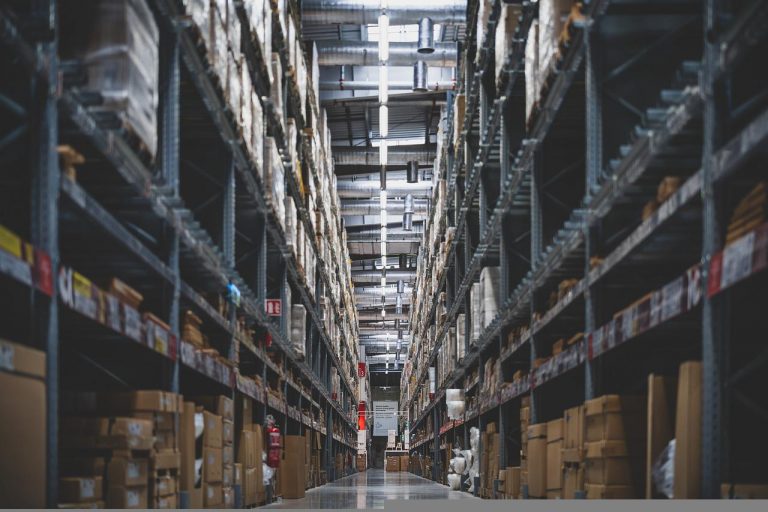By Dean Frew, CTO and Senior VP of RFID Solutions at SML Group
In a digitally-reliant world customer experience is more important than ever as it is the core of customer engagement and brand differentiation. Today, consumers opt for hybrid shopping experiences combining both online and in-store sales channels. Some may choose to browse and purchase items online and have them delivered to their homes, while others might want to explore merchandise online but physically try items on and purchase in-store. The key for retailers is offering enough flexibility to meet all preferences consistently with a frictionless experience. They must offer customers the opportunity to shop and receive purchases in a way that will instill confidence and brand loyalty.
However, if a retailer wishes to deliver this experience to customers, they must have a complete and highly-accurate view of inventory, and an efficient operational process. For many, this isn’t the case. According to research recently undertaken by SML, nearly half of retailers believe enhanced stock level visibility would help them better serve customers and increase the overall customer experience, with 24% seeing an unclear view of inventory as their biggest concern, and 21% also claim that it takes too long to locate items in-store.
With a more accurate view of stock, retailers can better manage items wherever they are – from the shop floor to warehouses – and provide improved customer service as a result.
Implementing Item-Level RFID Technology
The use of item-level RFID helps retailers create efficiencies in inventory management that streamline online shopping channels. The industry standard of inventory accuracy sits approximately at 65% at the item level. By deploying item-level RFID, retailers can increase this to 93%-99% quickly to start experiencing the benefits of an accurately stated inventory in their enterprise.
Enhanced inventory accuracy provides many benefits. Retailers have complete visibility over where their stock is in their enterprise. From warehouse to in-store, each business has an accurate view of where each individual item is allocated, allowing it to remain organized, saving time and money while maximizing the use of all existing inventory. With item-level RFID in place, retailers can create the foundations of a seamless and profitable omnichannel experience.
Delivering an Omnichannel Approach
The customer experience cannot be understated. While the digital world provides convenience, the in-store experience is still crucial to establishing brand loyalty. According to Kearney, 81% of American Gen Z consumers prefer to shop in-store to discover new products and more than 50% say in-store browsing is a way to disconnect from the digital world. Younger generations – which have grown up in a digital-first world – are recognizing the importance of being able to physically visit and experience high street stores.
With an omnichannel approach that blends online and in-store, increased stock visibility provides retailers with an opportunity to develop a buy online pick up in-store (BOPIS) and buy online return in-store (BORIS) strategy. As a result, customers are presented with the options and flexibility they demand as they receive the convenience of online sales and can also visit the store to pick up their purchases and browse other items.
Optimizing the In-Store Experience
An important benefit of item-level RFID is the time saving it creates for in-store associates. According to SML’s research, staff spend an average of 14.6 hours per week executing inventory-related tasks (counting, receiving, finding, transferring), with some respondents claiming that they spend as many as 36 hours per week. Similarly, finding stock poses its own set of challenges. Staff spend on average 10.9 hours per week searching for specific products and inventory to support customer requests with some responding that they take up to an additional 36 hours on this task as well.
With the ability to take stock checks in seconds, staff can save a significant amount of time. This allows in-store associates to spend more time serving customers and providing a great experience on the shop floor for customers.
In addition, the ability to leverage RFID Geiger search functionality to quickly find specific omnichannel items in store is an additional time saving and supports quicker BOPIS order fulfillment times and fewer order cancellations.
Putting the Customer First
The past few years have been pivotal for the development of retail technology and the blending of in-store and online sales channels. RFID technology allows retailers to remain agile and perfectly aligns with the trend in consumer demand for omnichannel services. With accurate and streamlined inventory management, retailers can continue to adapt seamlessly to an ever-changing retail landscape.
About the author

Dean Frew, Chief Technology Officer and Sr. VP for RFID Solutions, SML Group, and Founder of SML Intelligent Inventory Solutions (formerly Xterprise, purchased by SML in 2013). Mr. Frew is responsible for driving SML’s RFID Tags and Solutions strategy, and runs the RFID solutions division, based on his 20+ years of experience delivering RFID solutions to retailers and brand owners around the global.
Related Articles

Hexnode CEO on how the “Holiday Illusion” is Masking the Risks of Retail’s Seasonal Workforce
The danger of seasonal hires is magnified not just by who is accessing the network, but when they are doing it. Sophisticated threat actors possess a deep understanding of the retail operational calendar.

The New Frugality: How Inflation and Tariffs Are Reshaping Consumer Spending
One of the most telling shifts is how shoppers approach decision-making. Where convenience once dominated, consciousness now plays a larger role. People are researching more before making a purchase, comparing prices across multiple platforms, and questioning whether they really need the product in the first place.

Embracing new concepts vs the return to brick-and-mortar
Balancing the return to physical retail and the development of new technologies to enhance customer experience and drive operational efficiency for long-term success.
Enartis to Acquire Parsec in Winemaking and Retail Deal
The deal will bring Enartis and Parsec together to help wineries manage every part of production more easily and efficiently, from grape to bottle.
By Alexandra Forsch, President, Awin US
Consumers are understandably skeptical about politicians’ and businesses’ efforts towards more sustainable practices. Swedish climate activist Greta Thunberg summed up this collective feeling beautifully with the above response to the 2021 UN Climate Change Conference.
And yet despite the skepticism, sustainable commerce drives more customer choices every day – from where they shop to the specific products and services they choose. According to recent research, 53% of shoppers say sustainability is a driving factor in their purchasing decisions. Furthermore, 73% of Gen Z and 68% of millennials report they are willing to pay more for sustainable goods. These figures make every savvy retail CMO take notice.
As a retailer, how do you appropriately join the sustainability movement? Many well-intentioned companies tread lightly around green topics and eco-commerce initiatives. The challenge with pursuing a sustainability agenda or talking about your ecofriendly practices is the terms can be ambiguous.
Should you be a registered Bcorp? Is it enough to offset carbon footprint by planting trees? Should you only buy local, or is it better you buy from businesses eradicating single-use plastics? These questions are complicated further by accusations of corporate ‘greenwashing.’ And sustainability is just one part of a broader discussion around what it means to be ‘ethical’ today. Environmental concerns coexist alongside other vital social issues: diversity of representation, inclusivity, accessibility.
Transforming to a more sustainable business
For today’s consumers, conscious commercial actions speak louder than words or labels. Shoppers want brands to proactively demonstrate commitments through how they conduct business. They want to see you do.
That said, consumers aren’t looking for a grand gesture. Loose change can enact big change and there are several small steps you can take for great impact.
One way is to collaborate with manufacturers and suppliers to identify ecofriendly products on your shelves and sustainable swaps you can make. In the food and beverage sector, for example, retailers are placing additional focus on ensuring sustainable, local growing practices. And in consumables, several merchants are stocking lower-impact ‘refill’ packages that customers can reuse instead of single-use containers. While this step might seem like a daunting task, it isn’t a shift that needs to happen overnight. Look at leading retailer The Body Shop. Currently, more than 68% of its packaging can be recycled. With a goal to have all products fully-recyclable by 2025, it’s conducting a review of The Body Shop’s whole product portfolio to explore how to increase this percentage in the future – becoming more eco-conscious smartly versus quickly.
Another way to reduce your company’s carbon footprint is across shipping operations. Many brands are collaborating with logistics partners to deliver more sustainably. These innovations include lighter and compostable materials, product packaging that doesn’t require an additional box for shipping, reversible mailer sleeves that double as return packaging and ‘green delivery days’ in which they transport multiple packages at once instead of making a series of trips to the same location.
One final way you could improve your brand’s sustainability is by offering on-premise receptacles to collect disused items (regardless of whether they were initially sold by you) to be recycled or repurposed – especially e-waste, beverage containers and clothing. The partnership between Madewell and Cotton is one successful example of this practice, transforming donated denim into housing insulation and offering customers $20 off a new pair of jeans as a thank you.
The new wave of partnerships
As a for-profit company, becoming a more sustainable enterprise can’t be at the expense of your bottom line. In fact, adopting more ecofriendly practices opens up avenues to connect with that 53% of consumers driven to make sustainable purchases. So how do you reach them?
One of the best ways to engage with this target audience is via affiliate marketing partnerships. A growing number of affiliate partners (think influencers, bloggers, media houses… even cashback sites and coupon portals) specialize in sustainable and eco-conscious topics, curating recommendations of brands aligned with positive values that consumers can trust to buy from. They see the flexible, controllable nature of the performance-based affiliate marketing model affords a chance to monetize traffic with like-minded retailers while fulfilling their missions.
In these partnerships, you and your team collaborate with these trusted authorities by offering a commission for accountable customer sales and leads, creating relationships that reward sustainability partners when they drive business results for you and help fulfill both their mission and yours.
Such partnerships help shoppers feel part of the drive for a more sustainable world. They empower customers to express their values in their everyday purchases. By buying from you, they demonstrate a commitment to a more eco-conscious future. And this ethical ‘alliance’ helps drive increased purchases and shopper loyalty over shared values in how you drive future growth.
Putting a strategy into practice
The first step in pursuing these new eco-partnerships is to acquaint yourself with the many partners anxious to collaborate on a performance basis and whose eco-objectives and equities align with your own.
If you have an affiliate marketing team, they may already be familiar with some of these businesses. Further, your larger marketing team might have someone passionate about these initiatives who can help guide your efforts.
If your company’s sustainability efforts focus on something other than environmental issues, there are partners also supporting other worthwhile causes. For example, you can work on a performance basis with groups that support active-duty soldiers and veterans, promote universal healthcare access, fund better education, empower individual-level charitable giving, etc.
Whatever your goals, there are partners ready to help you take action. They align investment with your values, help your business grow and make your customers not only feel better about the initial purchase they make with you but help keep them coming back for more.
About the author

Alexandra Forsch is president of leading affiliate marketing platform Awin. As a seasoned online marketing professional with over 20 years of experience and a proven record of outperforming corporate goals, Alex has a strong background in performance marketing, media planning and buying, online marketing solutions, strategic and financial planning, team building and client relations. She started her journey with us in 2011 as Head of Account Management for buy.at and quickly progressed to lead the full North America operation, developing a high performing team and successful partner network as well as overseeing the US migration of buy.at to Affiliate Window, and later the rebrand to Awin in 2016. In 2019, Alex was appointed President of all US operations when unifying leadership of Awin and ShareASale, with goals to expand upon our strategic solutions offered to clients across both platforms in North America.


 for the latest news and job opportunities in retail tech
for the latest news and job opportunities in retail tech 